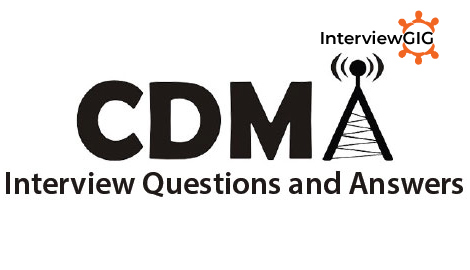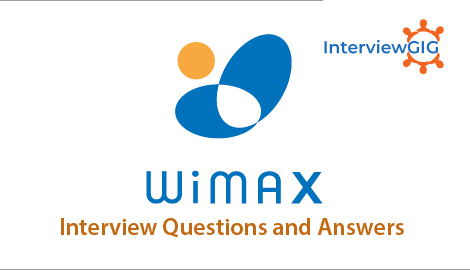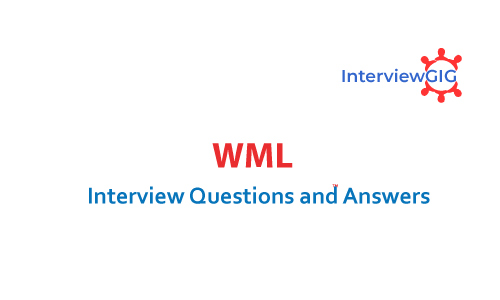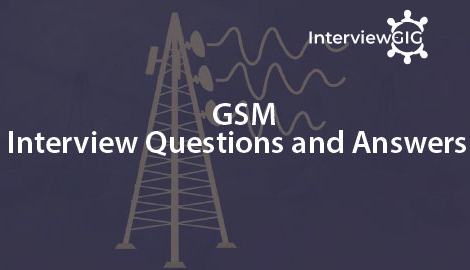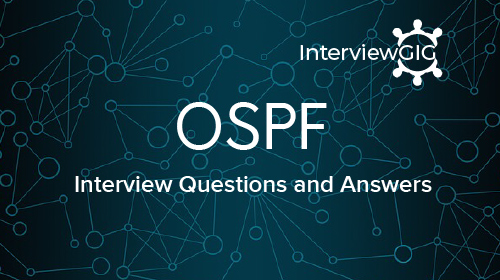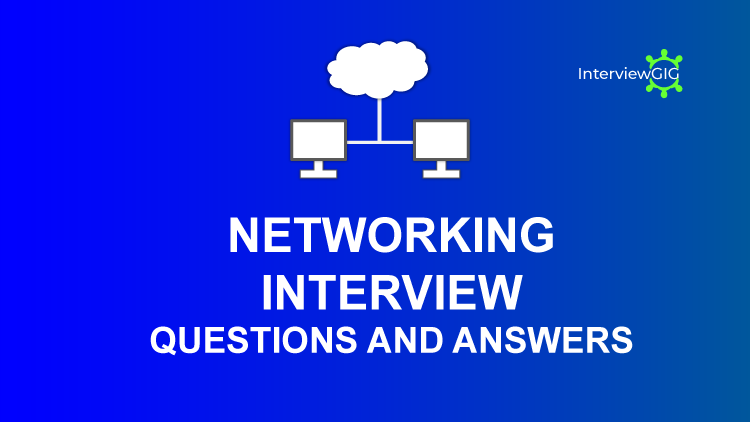Can you explain GPRS?
- Short form of General Packet Radio System
- GPRS is the next generation of GSM, and the basis of the 3G networks
- A packet-oriented data service available to users of GSM and IS-136 type mobile phones
- It complements the existing services like circuit-switched cellular phone connections and the SMS
- Shortest set-up time is added for ISP connections
- An optimized mobile service for sending and receiving information across a mobile telephone network, with less cost
- GPRS provides data rates of mobile telephony and moderate speed data transfer, using unused TDMA channels
- GPRS does not need dial-up modem connection
- Sending and receiving e-mails, surfing internet are among the features of GPRS
What signals are transferred in GPRS?
- GPRS uses 2.5 generation of GSM signals
- The radio interface is the same that of GSM
- GPRS uses 900 / 1800 Mhz, frequency band and GMSK modulation
- The bit rates are EGPRS, similar to EDGE
- Separate hardware and ports need to be added and availed.
- How are GPRS terminals classified?
- The GPRS services are classified into 12 service classes as per the duration of the time slots occupied / frame.
- Usually 5 time slots per frame are occupied including transmission time slots and reception time slots
- Increase in the number of occupied time slots certainly causes the increase in the entire duration of the occupied time slots, so that increased amount of data transmission and receipt are enabled
- All the 12 service classes are further classified into higher and lower classes as per the relative duration of time slots
- Higher speed data communication can be transmitted with high-class GPRS service by setting high transmission power and setting the duration of the time slots long.
What are the different coding schemes used in GPRS and their importance.?
Multiple Access Coding Scheme:
- Multiple access scheme is used in GPRS based on the FDD and TDMA
- One pair of up-link and down-link frequency channels are assigned to a user during a session
- The Multiple Access Coding Scheme is combined with statistical multiplexing [packet mode communication], that allows several uses to share the same frequency channel
- Downlink uses first-come first-served packet scheduling and uplink uses a scheme that is similar to reservation ALOHA.
- Slotted ALOHA is utilized for reservation inquiries in a contention phase, followed by transferring data by utilizing dynamic TDMA with first-come, first-served scheduling
Channel Encoding Scheme:
- Channel Encoding Scheme is based on a convolution code at various code rates and GMSK modulation
- The table below summarizes the options:
Coding Scheme Speed
CS-1 8.0
CS-2 12.0
CS-3 14.4
CS-4 20.0
- The least robust and fasted coding scheme is CS-4 and is available near a Base Transceiver Station
- The most robust coding scheme is CS-1 and is used in case of mobile station is further away from a BTS
- A speed of 20.0 Kbit/s/time slots can be achieved with CS-4 and has 25% normal cell coverage
- A speed of 8.0 Kbit/s/time slots can be achieved with CS-1 and has 98% of normal coverage
Multislot Class:
- Speed of data transfer available in the Uplink and Downlink directions is determined by Multislot Class
- The speed varies between 1 and 45 for allocating by the network to allocate radio channels in the uplink and downlink channels
- The representation of multi slot class is 5+2, for example, where the first number is the number of down link time slots and the second number is the number of uplink time slots that are allocated to use by a mobile station
What gross data rate does GPRS provide?
- GPRS provide gross data rate of 22.80 KBPS / time slot
- Voice uses only 13KBPS/ time slot and the rest is consumed by Error Correction Code
- Error connection code is utilized for detecting and correcting the transmission errors
- As voice is compressed, the usage of Error connection code is mandatory
- How does GPRS architecture differ from GSM?
- The following table depicts the architectural differences between GPRS and GSM
| Mobile Station |
New mobile station is needed for accessing GPRS services. They are backward compatible with GSM for voice calls |
| Base Transceiver Station |
Software upgrade is needed in the existing BTS |
| Base Station Controller |
Software upgrade and new hardware, Packet Control Unit are needed for GPRS. |
| GPRS Support Nodes |
Installation of new core network elements, known as serving GPRS support node, and gateway GPRS support node are needed to deploy GPRS |
| Databases |
Requires software upgrade to handle new models and functions to handle databases involved in the network |
Differentiate between GSM and GPRS?
The differences between GSM and GPRS are depicted in the following table
| GSM |
GPRS |
| Uses one among 7 slots |
Uses as many as 4+1 time slots |
| Connecting resources to each unit from remote location to the back office is done through a direct dial up |
Does not claim any resources until some data is sent. The information is divided into packets |
| Circuit switched mode of operations |
Packet switched mode of operations |
| Dedicated channel all the way to the destination is provided to the customer |
One or more dedicated channels are assigned by the operator specifically for shared use |
What is GSM?
- Short form of Global System for Mobile Communications, is a wireless network system
- A standard for digital cellular mobile communications
- International roaming arrangements are enabled among mobile network operators, by providing the subscribers to use their personal mobile phones anywhere in the world.
- GSM is considered as second generation mobile, as signaling and speech channels are digital
- The carriers can be replaced without replacing mobile phones.
- The ubiquity of GSM implementations is also enabling the switching between network operators, who can choose equipment from many GSM equipment vendors.
- GSM pioneered low cost SMS implementation
- The GSM standard includes a worldwide emergency telephone number feature.
Explain the services offered by GSM?
- The services offered by GSM are ISDN compatible
- GSM allows synchronous data and asynchronous data to be transported as bearer service, one of the telecommunication services offered by GSM, and forms ISDN terminal
- The data could be either transparent service or nontrans parent service
- Telephony is one of the services offered by GSM, which an emergency and the service provider is notified by dialling 3 digits
- By using appropriate fax adaptor, G3 fax service is supported
- One of the features of GSM is Short Messaging Service
- Certain services, namely supplementary services are provided on top of teleservices or bearer services by GSM, such as, caller identification, call forwarding, multiparty conversations, barring outgoing calls and call waiting.
What is the maximum data rate supported by a GSM system?
- The maximum data rate supported by a GSM system is 9.6 kbps.
- However, there are extensions to GSM standard to improve throughput.
- GPRS is one of the extended GSM service.
- The extended standards of GSM allow theoretical data rates on the order of 114 Kbit/s, but with throughput closer to 40Kbit/s in practice.
Explain the Sectorization of a cell?
- Sectorization is a process to cut down equipment costs in a cellular network. It influences in traffic load and cell size
- Sectorization reduces co-channel interference, when applied to clusters of cells
- The maximum traffic capacity of sectored antennas is more than omnidirectional antennas.
Explain the Frequency Reuse?
- Frequency re-use is the key factor of cellular network ability for increasing both coverage and capacity.
- Different frequencies are utilized by adjacent cells; however, problem does not arise to determine the cell sufficiently far apart using the same frequency.
- Reuse distance and the reuse factor are the two elements that influence frequency reusability
- The frequency is 1/K, where K is the number of cells that cannot use the same frequencies for transmission.
Explain the Transmitted Power Control?
- Transmitted power control is one of the technical mechanism used within some networking devices
- TPC is used for preventing too much unwanted interference among wireless networks
- The central idea is to automatically reduce the transmission output power used, when other networks are within the same range.
- TPC reduces interference problems and increases the battery capacity
- The power levels of a single mobile device can be reduced by 6dB
Explain the Discontinuous Transmission?
- Discontinuous Transmission, also known as DTX in short is a method of momentarily powering down a mobile set when there is no voice input to the set.
- The overall efficiency of a wireless voice communication system is optimized by DTX.
- Each speaker in a two-way conversation speaks slightly less than half of the time.
- The workload of the components in the transmitter amplifiers are made easy and reduces interference.
Which uplink/ downlink spectrum is allocated to following? GSM – 900 and DCS – 1800?
GSM – 900: Uplink spectrum is 890.2–914.8 and downlink spectrum is 935.2–959.8
DCS – 1800: Uplink spectrum is 1710.2–1784.8, and downlink spectrum is 1805.2–1879.8
What are the algorithms used in Ciphering and Authentication?
Ciphering
- The algorithm 129-EEA3 and 128-EIA3, 3GPP Confidentiality and Integrity Algorithm is used for ciphering in GSM
Authentication
- The algorithm by name A3 is used for authentication in the GSM systems
- This algorithm is used in implementing Subscriber Identity Module
Explain Equalisation?
- An adaptive equalizer is employed by a GSM receiver for overcoming the impact of non-ideal channel characteristics which are caused by multipath propagation.
- Adaptive equalizer is required because the channel characteristics are often changing fast.
- Tuning the for each time slot is done by the equalizer.
Explain Interleaving?
- Time diversity in a signal communication system is obtained by using Interleaving.
- The possibility of losing whole bursts will be decreased by interleaving
- Total 456 bits from convolution encoder, including 20ms of speech, is subdivided into eight blocks. Each block consists of 57 bits.
- All these blocks are transmitted in consecutive time slots.
- Enough information is available in 7 blocks, in case one of the blocks is lost due to burst errors. This enables whole segment recovery by using error correction.
Explain Speech coding?
- Speech coding is all about turning voice into digital form
- Speech is inherently analog, as GSM is a digital system.
- The digitization is employed by ISDN, and the current telephone systems that are used for multiplexing voice lines, with high speed trunks, optical fiber lines is done by Pulse Code Modulation(PCM)
- The PCM output is 64 kbps, which is too high over a radio link in feasibility
- The 64kbps signal is redundant
- The algorithm used in conventional cellular is Vector Sum Excited Linear Predictive speech compression.
Explain Channel coding?
- The data rate for the radio channel is 270 kbps
- The data rate is split into 8 full rates or 16 half rate traffic channels, along with signalling channels
- In order to have the maximum chance for detecting and correcting errors, the code is complex in a typical propagation path
- Forward Error Correction is applied in order to get the speech coder encryption, coding and interleaving in a sophisticated way
- The data is sent as bursts in 577 mus time slots. Each contains 116 encrypted bits
- Every TDMA frame consists of 8 or 16 time slots
- Transmit time slots are staggered, so that at some instant the mobile station will not receive the same instants while transmitting, which enables the simplifying the filtering requirements
- At least one spare slot between transmit and receive is available with this scheme.
What is frequency re-use?
Frequency Reuse:
- Frequency Reuse is one of the techniques for improving capacity and spectral efficiency
- Commercial wireless systems are based on Frequency Reuse, that involves the partitioning of an RF radiation area into cell segments.
- A frequency that is far enough away from the frequency in the bordering segment is used by one segment of the cell.
- Similar frequency is used at least two cells apart from each other.
- This practice enables various cellular providers to have several customers for a given site license.
What are the interfaces between BTS and MS?
- Base station subsystem is a segment of cellular telephone network that is responsible for setting signals and traffic between mobile phone sets and network switching subsystems.
- Transcoding of speech channels are carried out by BSS. BSS allocates radio channels to mobile phones, paging, transmission and reception over the air interface and many other tasks that are pertaining to the radio network.
What are the interfaces between BTS and BSC?
- Base Station Controller provides the intelligence behind the BTSs. A BSC conrolls hundreds of BTSs.
- Allocation of radio channels, receiving measurements from the mobile phones are some of the major task handlings by BSC.
- BSC controls BTS to BTS.
- BSC acts as a concentrator in which many different low capacity connections to BTSs will become reduced to few numbers of connections towards the mobile switching center.
- BSC provides the required data to operation support subsystem(OSS) and also to the performance measuring centers
- BTS supports the key features like, frequency hopping, sectorization, and GPRS.
- The expansion and upgradation in the field are the features emphasized during its design.
- The power output of BTS is up to 80W.
What are the interfaces between BSS and MSC?
- BSS will send the called number to MSC (Mobile Switching Center)
- MSC checks the VLR and queries BSS for allocation of resources for the cell
- Then MSC routes the call to GMSC
- Switching nodes for base station controls is done by MSC
What are the interfaces between TRAU and BSC?
- TRAU (Transcoder and Rate Adaptation Unit) is an entity to perform a transcoding function for speech channels and RA (Rate Adaptation) for various data channels.
- BSC and TRAU does not demand specific environmental conditions to perform operations.
- With this the operator has an option for placing any one or both units at a central location.
- BSC supports various BSC-BTS configurations like star, multidrop and loop, and star configurations towards TRAU
- TRAU is a standalone unit which could be located close to a MSC (Mobile Switching Center), which enables the optimum utilization of 16 kbit/s channel sub multiplexing and saves line costs.
What are the interfaces between BSC and PCU?
- The Packet Control Unit is an adaptor / handler unit which enables GPRS and EDGE functionality within Radio Access Network.
- The BSC from the GSM network is connected with packet core by PCU
- Motorola PCU is based on certain industry standards like Compact PCI and is highly scaleable.
